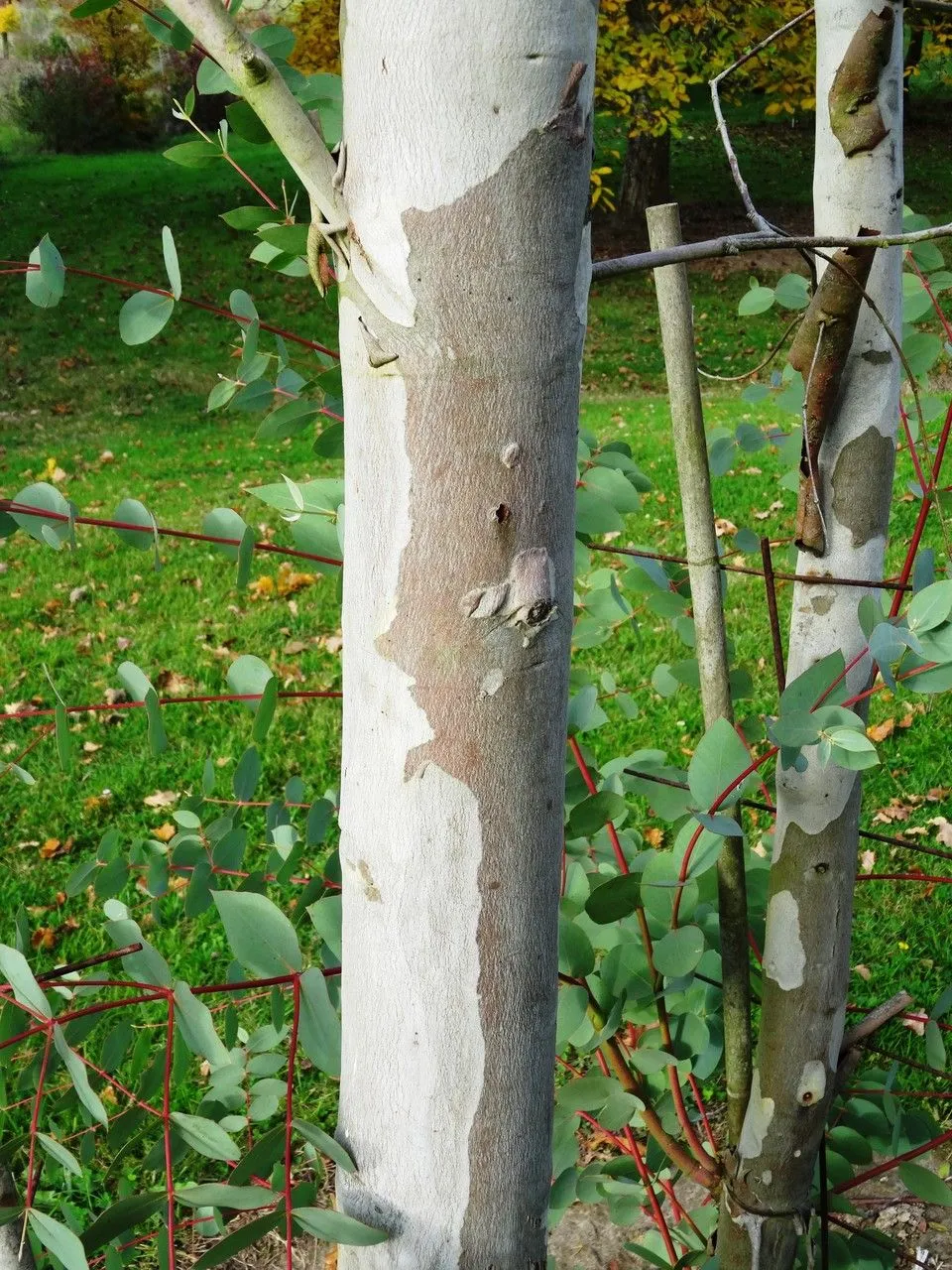
Author: H.Deane & Maiden
Bibliography: Proc. Linn. Soc. New South Wales 24: 456 (1899)
Year: 1899
Status: accepted
Rank: species
Genus: Eucalyptus
Vegetable: False
Observations: SE. Australia
Candlebark, scientifically known as Eucalyptus rubida, is a prominent tree native to southeastern Australia. The species was first described by botanists H. Deane & Maiden in a 1899 publication in the Proceedings of the Linnean Society of New South Wales. Belonging to the Myrtaceae family, this species is noted for its striking bark and robust adaptability to various environmental conditions.
The Candlebark tree is especially appreciated for its aesthetic appeal and ecological contributions. It exhibits smooth, powdery bark that glows in shades of white, cream, or pink, and often peels away in ribbons, giving a characteristic look that earns the tree its common name. The bark’s luminescent quality is particularly striking when caught in the interplay of light and shade, creating a natural spectacle in its native habitat.
This eucalypt thrives in its natural range, evident by its presence across southeastern Australia. Here, it predominantly grows in cooler regions, where it contributes significantly to the local ecosystem. The tree’s leaves are elongated, green to bluish-green, and aromatic when crushed, releasing a scent typical of eucalyptus species. These leaves are not only vital for their role in photosynthesis but also serve as food for various native fauna, including koalas.
Eucalyptus rubida flowers are another highlight, typically blooming in clusters and showcasing white to cream-colored petals. These blossoms attract a plethora of pollinators, including insects and birds, facilitating the tree’s reproduction and the continuity of its species.
In addition to its beauty and ecological value, the Candlebark also holds utility for humans. Its timber is used in various applications, from construction to firewood, and its essential oils are extracted for their antiseptic properties.
Understanding and maintaining the health of Eucalyptus rubida is crucial, as it not only supports biodiversity but also offers myriad benefits to the environment and human use. Conservation efforts ensure that this majestic tree continues to thrive in its natural habitat, offering picturesque landscapes and supporting the intricate web of life in southeastern Australia’s woodlands.
Eng: candlebark, candlebark gum, ribbon gum, ribbon-gum, white gum, white-gum
Por: eucalipto
En: Candlebark, Candlebark gum, Ribbon gum, Ribbon-gum, White gum, White-gum
Pt: Eucalipto
Taken Feb 20, 2019 by kafaktor (cc-by-sa)
Taken Oct 25, 2015 by Tela Botanica − Alain BIGOU (cc-by-sa)
Taken Aug 3, 2021 by Kaburyu (cc-by-sa)
Taken Aug 26, 2020 by J K (cc-by-sa)
Taken Oct 25, 2015 by Tela Botanica − Alain BIGOU (cc-by-sa)
Taken Oct 25, 2015 by Tela Botanica − Alain BIGOU (cc-by-sa)
Taken Oct 25, 2015 by Tela Botanica − Alain BIGOU (cc-by-sa)
Family: Myrtaceae Author: (F.Muell.) K.D.Hill & L.A.S.Johnson Bibliography: Telopea 6: 402 (1995) Year: 1995 Status:…
Family: Rubiaceae Author: Pierre ex A.Froehner Bibliography: Notizbl. Bot. Gart. Berlin-Dahlem 1: 237 (1897) Year:…
Family: Sapindaceae Author: Koidz. Bibliography: J. Coll. Sci. Imp. Univ. Tokyo 32(1): 38 (1911) Year:…
Family: Asteraceae Author: A.Gray Bibliography: Pacif. Railr. Rep.: 107 (1857) Year: 1857 Status: accepted Rank:…
Family: Fabaceae Author: Medik. Bibliography: Vorles. Churpfälz. Phys.-Ökon. Ges. 2: 398 (1787) Year: 1787 Status:…
Family: Aspleniaceae Author: (Cav.) Alston Bibliography: Bull. Misc. Inform. Kew 1932: 309 (1932) Year: 1932…